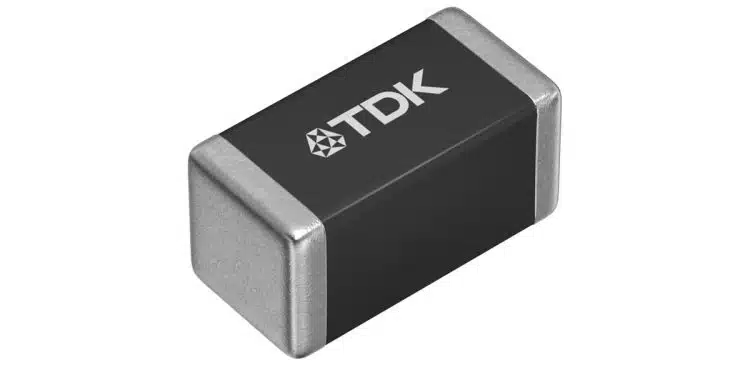TDK Corporation has announced its latest compact EMC noise suppression filters MAF1005FR series, measuring 1.0 mm (L) x 0.5 mm (W) x 0.5 mm (H). These multilayer chip components are designed to improve sound quality and reduce noise interference in the audio lines (sound lines) of smartphones and other devices such as tablets, wearables, and portable games. Mass production of the product series began this month, November 2023.
The audio lines in smartphones and similar devices emit electromagnetic noise, which can interfere with built-in antennas and degrade reception quality. This noise can be problematic, especially when high-quality audio and effective noise suppression are required. Chip beads are commonly used to control noise in audio lines. However, although they effectively reduce noise, they can also distort the audio quality, impacting the sound in these lines.
The new MAF1005FR series of noise suppression filters can improve sound quality and reduce noise interference, with a typical impedance of up to 2600 Ω at 900 MHz and insertion loss of more than 25 dB. This is achieved by newly developed low-distortion ferrite materials. As a result, the sound quality is maintained, and the issue of sound deterioration caused by chip beads is addressed.
These components have a wide frequency bandpass, extending from the FM band to the cellular band. Unlike conventional products, which require two noise suppression filters for each frequency range, only one MAF1005FR component is required. This simplifies the design and implementation of noise suppression in electronic devices. The noise suppression filters are extremely compact, and an operating temperature range of -55 °C to +125 °C is supported.
TDK plans to expand its product lineup to include smaller components for high-frequency bandpass noise control, ranging from 900 MHz to 5 GHz. The company will also continue to provide products for applications requiring large current support, such as speakers, to meet market demands.
Features
- Reduce electromagnetic noise across a wide range of frequencies, spanning from the FM band to the cellular band
- Reduce audio distortions when inserted into devices, with newly developed low-distortion ferrite materials
- Controlled sound distortions with only minimal reductions in volume, due to low resistance
Applications
- Audio lines for smartphones, tablets, wearable devices and portable games (earphones, microphones, speakers)
Specification
| Type | Impedance [Ω] @100MHz | Impedance [Ω] typ. @900MHz | DC resistance [Ω] max. | Rated current [mA] max. |
|---|---|---|---|---|
| MAF1005FRQ601AT000 | 600 ±25% | 1800 | 1.00 | 280 |
| MAF1005FRQ801AT000 | 800 ±25% | 2200 | 1.35 | 270 |
| MAF1005FRQ102AT000 | 1000 ±25% | 2600 | 1.65 | 240 |































